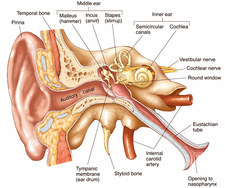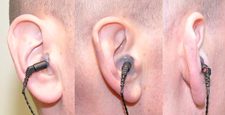It’s the time of year for saving money!
According to the Merriam-Webster dictionary Occlude means “to close up or block off.” In the context of an in-ears monitor an “occluded seal” is one where area at the opening of your ear canal is completely blocked by the in-ear monitor.
 Why is an occluded fit so important? Because if you do not have a complete seal your in-ear monitors will not sound anywhere near what the manufacturer intended. When an in-ear monitor is tested at the factory, the reference standard is the Gras coupler, which measures the in-ear’s occluded frequency response. If you want your earphones to achieve a similar frequency response to what was measured at the factory you need to have a complete seal around your ear canal as well.
Why is an occluded fit so important? Because if you do not have a complete seal your in-ear monitors will not sound anywhere near what the manufacturer intended. When an in-ear monitor is tested at the factory, the reference standard is the Gras coupler, which measures the in-ear’s occluded frequency response. If you want your earphones to achieve a similar frequency response to what was measured at the factory you need to have a complete seal around your ear canal as well.
What if you don’t have a complete seal around your ear canal? If you don’t have a good seal your in-ear’s bass response will suffer. You can demonstrate for yourself how the bass response will change by merely pushing in and slightly pulling out a pair of properly fitting in-ears. The bass response will change drastically with most in-ears, from too much bass when pushed in to almost no bass when partially pulled out.
 Whether you can get a complete occluded fit from a pair of in-ears depends on several factors – the shape of your ear canal, the size and shape of the in-ear’s front barrel, and the size, shape and composition of the in-ear’s ear-tips. If you have rapidly narrowing ear canals you may find that some tips, especially those with larger barrels, will very likely need to occlude at the very front of your ear canal and require a large foam eartip. Conversely, for other users of that same earphone who have a larger ear canal may want it to occlude farther inside their ear canal. For a fit like this a flanged silicon eartip will usually provide the best fit. Some in-ear monitors, such as the Etymotic ER-4P, are designed to fit deep in your ear canal, while others, such as the Audeze iSine-20 are made to sit at the front edge of your ear canal. And while some people find the deep insertion design exceedingly uncomfortable, I love the feel of the Etys with their triple flange tip.
Whether you can get a complete occluded fit from a pair of in-ears depends on several factors – the shape of your ear canal, the size and shape of the in-ear’s front barrel, and the size, shape and composition of the in-ear’s ear-tips. If you have rapidly narrowing ear canals you may find that some tips, especially those with larger barrels, will very likely need to occlude at the very front of your ear canal and require a large foam eartip. Conversely, for other users of that same earphone who have a larger ear canal may want it to occlude farther inside their ear canal. For a fit like this a flanged silicon eartip will usually provide the best fit. Some in-ear monitors, such as the Etymotic ER-4P, are designed to fit deep in your ear canal, while others, such as the Audeze iSine-20 are made to sit at the front edge of your ear canal. And while some people find the deep insertion design exceedingly uncomfortable, I love the feel of the Etys with their triple flange tip.
Because of the shape of my ear canals, I gravitate toward deeper insertion in-ears such as the Etymotic, but I find that with some earphones, such as the KZ ZS3 I use a large Comply foam tips that grip the outer edges of my ear canal. Even with the iSine-20, which is one of the only “open” design in-ears (the other open in-ear I know is the Stax SRM-01 and SRS-02) performs best when its tips make an occluded seal.
 The takeaway here is if you try a pair of in-ears and their low frequency performance does not have the extension or impact that the specifications indicate it should have, before complaining on-line or adding 15 dB of bass boost via an EQ, you need to examine the fit. If you aren’t getting a solid occluded fit you are not hearing what a pair of in ears, any in-ears, should sound like. Because when it comes to in-ears, fit is everything…
The takeaway here is if you try a pair of in-ears and their low frequency performance does not have the extension or impact that the specifications indicate it should have, before complaining on-line or adding 15 dB of bass boost via an EQ, you need to examine the fit. If you aren’t getting a solid occluded fit you are not hearing what a pair of in ears, any in-ears, should sound like. Because when it comes to in-ears, fit is everything…








